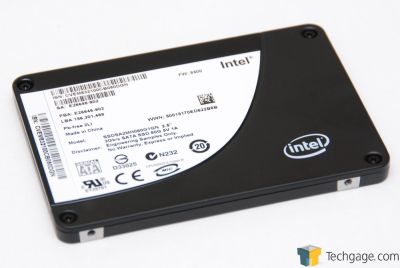From our front-page news:
It's become common knowledge that upgrading your PC to "top-of-the-line" status right now will mean little six months from now. Faster components come out all the time, from CPUs to GPUs and even storage. The latter is one area where things are happening really fast, though, and proof of that is with SSD technology. We are constantly being bombarded with new releases that are not only larger in density, but faster and less expensive.
The fastest "consumer" SSD on the market right now (to my knowledge) is Intel's X25-M, which has a Read speed of 250MB/s and Write speed of 70MB/s. The company's own enterprise SSD, the X25-E, increases the Write to a staggering 170MB/s, which is all fine and good, but Micron believes that we'll be seeing SSDs within the year that will be able to withstand up to 1GB/s performance, four times what Intel's current SSDs are capable of. It's unknown whether that figure is just for Read performance, or both, but it's likely to be the former.
Tests that Micron themselves have been showing off have seen results into the 200,000 IOPS area, which is truly incredible in every regard (Intel's X25-E is 35,000). Using blocks ranging between 2KB and 2MB, the IOPS performance was still impressive, at ~160,000 IOPS. So the problem is, if we are going to be seeing performance like this within the next year, it's going to make purchasing an SSD today a difficult process. It will be nice once things settle down, but it's definitely fun to see the performance of these pushed to incredible heights. The future of storage is looking very good.
Klein added that Micron's SSD uses "multiple channels" and was built interleaving 64 NAND chips to achieve its high throughput. The SSD is also based on several technology advances announced by Micron this year, including its 34 nanometer NAND chip architecture announced in May and the RealSSD P200 series drives announced in August.
Source: Computerworld
The fastest "consumer" SSD on the market right now (to my knowledge) is Intel's X25-M, which has a Read speed of 250MB/s and Write speed of 70MB/s. The company's own enterprise SSD, the X25-E, increases the Write to a staggering 170MB/s, which is all fine and good, but Micron believes that we'll be seeing SSDs within the year that will be able to withstand up to 1GB/s performance, four times what Intel's current SSDs are capable of. It's unknown whether that figure is just for Read performance, or both, but it's likely to be the former.
Tests that Micron themselves have been showing off have seen results into the 200,000 IOPS area, which is truly incredible in every regard (Intel's X25-E is 35,000). Using blocks ranging between 2KB and 2MB, the IOPS performance was still impressive, at ~160,000 IOPS. So the problem is, if we are going to be seeing performance like this within the next year, it's going to make purchasing an SSD today a difficult process. It will be nice once things settle down, but it's definitely fun to see the performance of these pushed to incredible heights. The future of storage is looking very good.
Klein added that Micron's SSD uses "multiple channels" and was built interleaving 64 NAND chips to achieve its high throughput. The SSD is also based on several technology advances announced by Micron this year, including its 34 nanometer NAND chip architecture announced in May and the RealSSD P200 series drives announced in August.
Source: Computerworld

